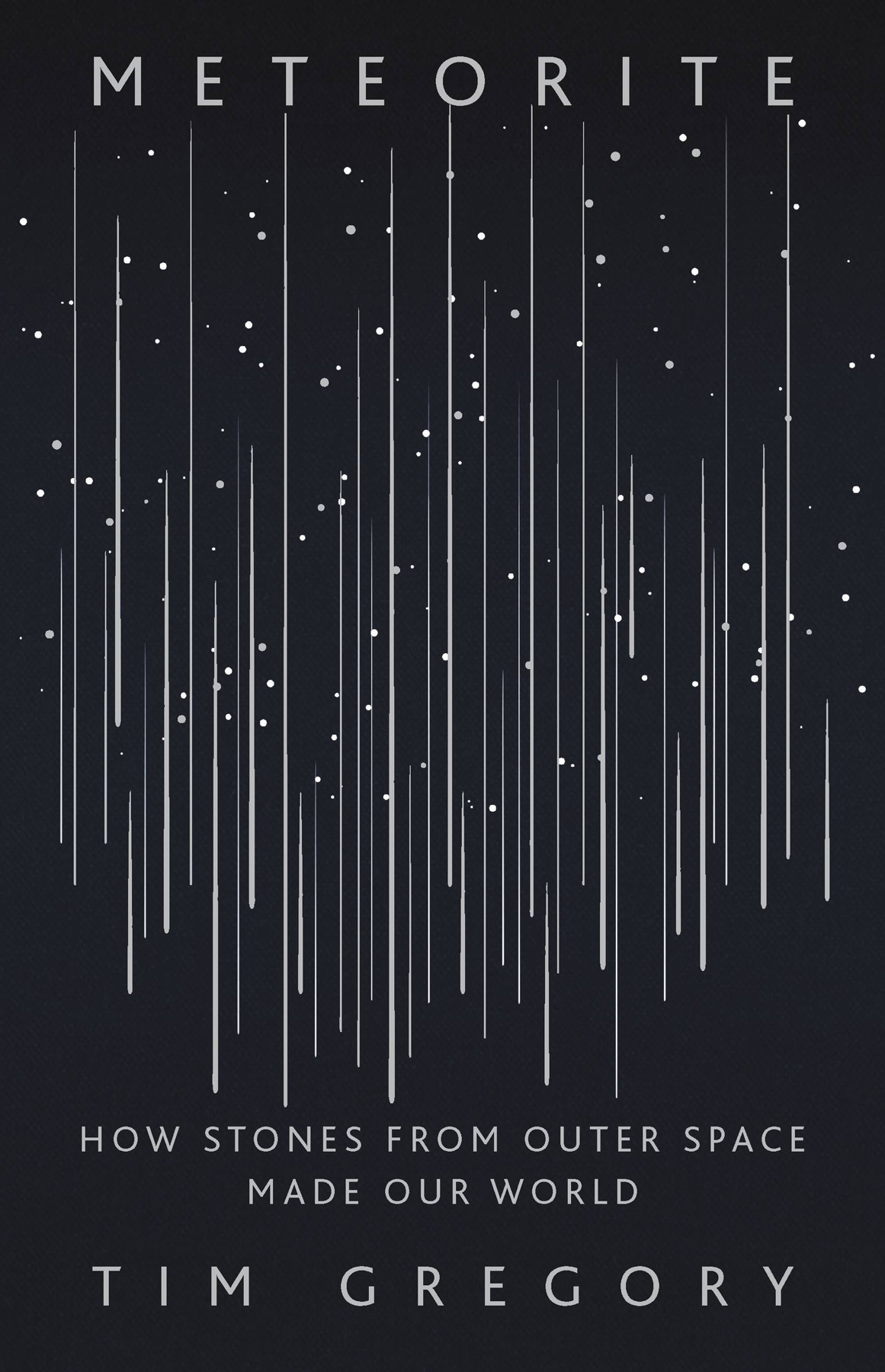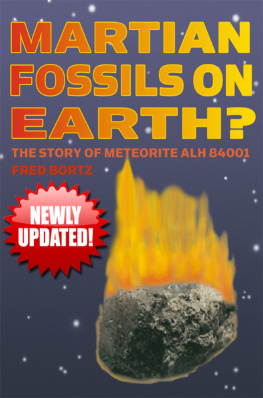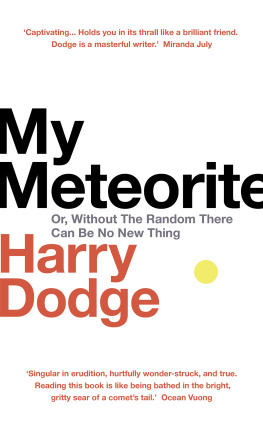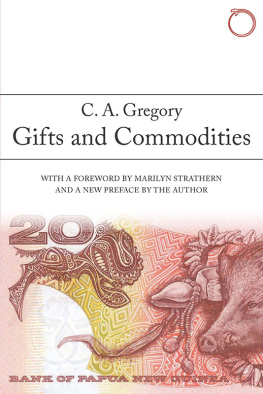Tim Gregory - Meteorite
Here you can read online Tim Gregory - Meteorite full text of the book (entire story) in english for free. Download pdf and epub, get meaning, cover and reviews about this ebook. year: 2020, publisher: Basic Books, genre: Religion. Description of the work, (preface) as well as reviews are available. Best literature library LitArk.com created for fans of good reading and offers a wide selection of genres:
Romance novel
Science fiction
Adventure
Detective
Science
History
Home and family
Prose
Art
Politics
Computer
Non-fiction
Religion
Business
Children
Humor
Choose a favorite category and find really read worthwhile books. Enjoy immersion in the world of imagination, feel the emotions of the characters or learn something new for yourself, make an fascinating discovery.

- Book:Meteorite
- Author:
- Publisher:Basic Books
- Genre:
- Year:2020
- Rating:4 / 5
- Favourites:Add to favourites
- Your mark:
- 80
- 1
- 2
- 3
- 4
- 5
Meteorite: summary, description and annotation
We offer to read an annotation, description, summary or preface (depends on what the author of the book "Meteorite" wrote himself). If you haven't found the necessary information about the book — write in the comments, we will try to find it.
Meteorite — read online for free the complete book (whole text) full work
Below is the text of the book, divided by pages. System saving the place of the last page read, allows you to conveniently read the book "Meteorite" online for free, without having to search again every time where you left off. Put a bookmark, and you can go to the page where you finished reading at any time.
Font size:
Interval:
Bookmark:

Copyright 2020 by Tim Gregory
Cover copyright 2020 by Hachette Book Group, Inc.
Hachette Book Group supports the right to free expression and the value of copyright. The purpose of copyright is to encourage writers and artists to produce the creative works that enrich our culture.
The scanning, uploading, and distribution of this book without permission is a theft of the authors intellectual property. If you would like permission to use material from the book (other than for review purposes), please contact permissions@hbgusa.com. Thank you for your support of the authors rights.
Basic Books
Hachette Book Group
1290 Avenue of the Americas, New York, NY 10104
www.basicbooks.com
Originally published in 2020 by John Murray (Publishers) in Great Britain
First US Edition: October 2020
Published by Basic Books, an imprint of Perseus Books, LLC, a subsidiary of Hachette Book Group, Inc. The Basic Books name and logo is a trademark of the Hachette Book Group.
The Hachette Speakers Bureau provides a wide range of authors for speaking events. To find out more, go to www.hachettespeakersbureau.com or call (866) 376-6591.
The publisher is not responsible for websites (or their content) that are not owned by the publisher.
Internal artwork drawn by Rodney Paul.
Typeset in Bembo MT by Hewer Text UK Ltd, Edinburgh
Library of Congress Control Number: 2020940088
ISBNs: 978-1-5416-4761-9 (hardcover); 978-1-5416-4760-2 (ebook)
E3-20200917-JV-NF-ORI
This book is dedicated to you.
All you that do behold my stone,
O; think how quickly I was gone;
death doth not always warning give
therefore be careful how you live.
This elegy is carved into a headstone in the Wold Newton churchyard, East Riding of Yorkshire, commemorating the life of John Shipley (17791829). Shipley was a ploughman of the nearby Wold Cottage estate. He almost became the first person in recorded history to be hit by a meteorite falling from the sky.
The oldest stories tell of fantastic beings and extraordinary events. Chariots drawing the Sun across the sky; great snakes devouring worlds; spirits singing the Universe into existence; Creation itself arising from the dismembered bodies of deities. Such stories were told by people who lived before the advent of the scientific method and so, although to our modern minds they may seem remote from reality, they provided a framework in which our ancestors could understand the world.
For most of human history, these stories passed from person to person through the spoken word. The mind was the only place where they could be stored. If a story or snippet of understanding was not spoken, heard, and then remembered by somebody else, it died along with the mind in which it sat. Only through the spoken word and commitment to memory could stories transcend a human lifetime.
It wasnt until some 125,000 years of human history had elapsed that stories and ideas were liberated from minds and rendered as objects in the real world. The oldest known human artwork (at the time of writing) was discovered in the Blombos Cave in South Africa and dates back some 75,000 years. It is an unassuming shard of stone a few centimetres acrosseasily small enough to clasp between thumb and forefingerand embellished by a cross-hatch pattern drawn with an orange-red clay. The first human artworks were drawn using rocks as both paper and ink: rock was the first medium on which human thoughts were consciously recorded.
Recording stories and ideas in this way became a long-standing tradition, and as the slow march of human history progressed, the physical representations of thoughts became more sophisticated. Stories began to be written down. Thirty-five millennia after the cross-hatched pattern was drawn onto the stone in Blombos, our ancestors were drawing animals on the walls of the limestone caves of Maros in Indonesia. They drew these animals because they were important to them: they were the source of food that kept them and their fellow tribespeople alive. Their drawings show a deep respect. These animals would have been a major part of the story of the artists world and life, and so they recorded that story permanently on the rocky walls of the caves.
The people living in those caves also left shadows of themselves on the rock. Inside the caves of Maros lie a dozen stencils of human hands. Their creators made them by pressing their hands against the cold cave walls and spraying them with a wet pigment, probably from their mouths. This simple act marked another great leap forward for our species consciousness. The handprints are explicit attempts made by our ancestors to leave a trace of themselves upon the physical world, an ancient version of I was here. They probably had a concept of a tangible future, a time when they would no longer walk the Earth, when the story of their world would continue without them. We see their small story today, 40,000 years later, by reading it on the rocky limestone walls.
Anything that is recognisable as writing didnt come along until about 5,000 years ago, by which time over ninety-seven per cent of our existence as a species (so far) had passed. Written words were first created by pressing symbols into clay tablets and chiselling them into tablets, and later by scratching ink onto parchment. Their purpose was elegantly simple: to allow thoughts and stories to be recorded in the physical world, precisely and accurately, and read later by somebody else. It is a means, other than the spoken word, by which the thoughts of one person can be placed into the mind of another, but it transcends the lifetime of the thoughts original bearer. It is the closest humanity has ever got to mind reading, and the closest well ever come to communicating with the dead (though admittedly, the conversation is entirely in one direction). And its all done via strange-looking shapes carved into stone tablets, scratched onto pieces of parchment with ink or, as in the case of this book, printed onto paper (or perhaps shining from an ebook reader).
Writing changes the way thoughts are recorded, and eliminates much scope for ambiguity and changes in meaning as they are passed from mind to mind. It also means that it is easier to catch up on things that have already been discovered; knowledge and ideas do not have to be acquired from scratch by each new generation, freeing up our time and headspace to make new discoveries and plumb the depths of new understanding.
Our acquisition of knowledge and understanding of the world accelerated as a result of the long tradition of recording stories, and it all began by recording them on rocks.
Parallel tales
There is another story written in rock, but this one wasnt written by us. It was written by Nature, and it begins further back in time than our own human story. Much further back. And it unfolds over a timescale so vast that it is impossible for the human mind to fully comprehend.
It began about four and a half billion years ago. This is time on a scale that dwarfs the 200,000 years during which humans have walked the planet, and it has an appropriately evocative name: deep time, or geological time. This is the reel on which Earths story plays out. It unravels on timescales where continents move, sea floors are raised to jagged mountain peaks, and millions of species come and go as they evolve before marching headlong into extinction.
The only way that the slightest sense of the immensity of geological time can be grasped is through analogy and metaphor. Imagine a twenty-four-hour geological day, where the entire four and a half billion years or so of Earths history is squeezed down into twenty-four hours. On this timescale, the history of humanity would be just shy of four seconds long. The cross-hatch pattern from the Blombos Cave was drawn one and a half seconds ago. Writing was invented about one-tenth of one second ago, which, as it happens, is the time it takes to blink. Dinosaurs, often thought of as ancient life forms from the deepest recesses of the past, only evolved something like one hour and fifteen minutes ago, and their time on this planet came to an end after about fifty-five minutes. Trees have existed for a mere two hours. The land was little more than a bleak rocky desert until land plants evolved some two and a half hours ago, and the oceans were devoid of fish only half an hour before that.
Font size:
Interval:
Bookmark:
Similar books «Meteorite»
Look at similar books to Meteorite. We have selected literature similar in name and meaning in the hope of providing readers with more options to find new, interesting, not yet read works.
Discussion, reviews of the book Meteorite and just readers' own opinions. Leave your comments, write what you think about the work, its meaning or the main characters. Specify what exactly you liked and what you didn't like, and why you think so.










